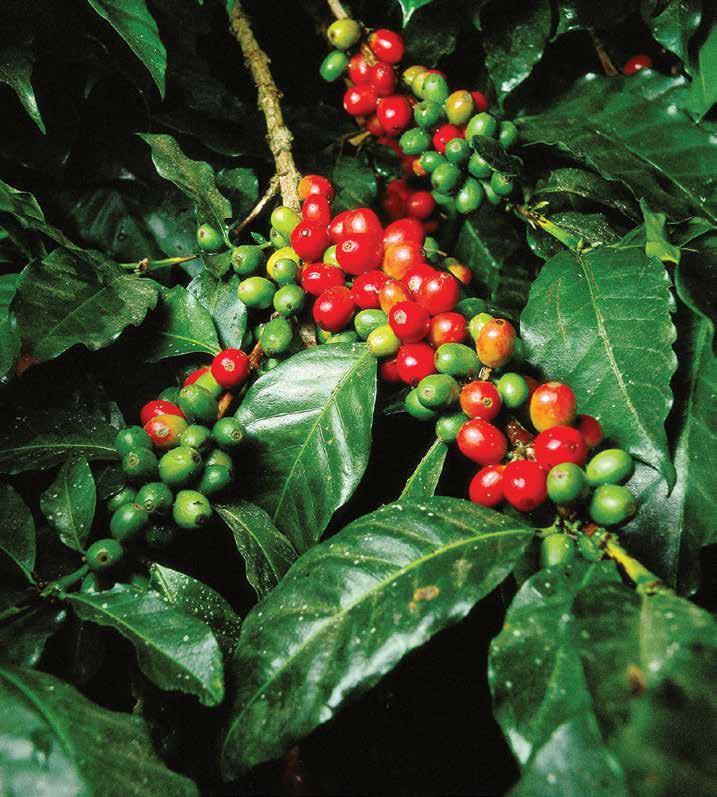
8 minute read
Meglio Espresso o cold brew? Espresso or cold brew?
All’Università del caffè illy per scoprire i segreti di una bevanda molto italiana, ma che piace in tutto il mondo Espresso or Cold Brew? Spazio Italia goes to the illy Università del Caffè to discover the secrets of a very Italian drink much-loved worldwide
by GIOVANNI DE LUCA
Advertisement
Bacche preziose
Al loro interno il chicco del caffè Sotto: gli aromi di un espresso sono il frutto di una lunga filiera di cui illy è protagonista
Precious beans
Coffee in the raw Below: the aroma of an espresso come from a long process where illy reigns supreme
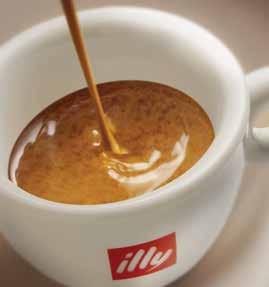
Meglio espresso o cold brew?
Si fa presto a dire “caffè”, ma dietro a questa parola che tutti conosciamo c’è un mondo tutto da
scoprire. Caffè oggi infatti non significa più solo “espresso”, ma identifica un’infinità di bevande, calde e fredde, da preparare seguendo costumanze spesso tramandate oralmente, generazione dopo generazione. Le variabili? Infinite. Meglio la classica moka o le cialde? Ma soprattutto, qual è la tostatura più adatta al nostro palato? Senza dimenticare il vero dilemma: la fiamma va bassa o alta? L’uomo che può darvi tutte le risposte è Moreno Faina, il direttore dell’Università del Caffè illy, un professionista del gusto che, ad ogni latitudine, da anni spiega a generazioni di baristi i segreti per tirare fuori il massimo dal caffè che l’azienda triestina produce e distribuisce in tutto il mondo. “Il progetto prende corpo alla fine del 1999 - spiega Faina - dall’incontro fra Ernesto Illy e il prof. Raffaele Cercola dell’Università di Napoli, due appassionati cultori del caffè che decisero di dar vita ad un percorso formativo destinato al mondo della ristorazione. Iniziativa di successo a cui in breve si affiancò un analogo progetto destinato ai coltivatori di caffè brasiliani per aumentare le loro conoscenze e migliorare la qualità del prodotto. Ma ben presto illy decise anche di dare la possibilità anche al consumatore finale di conoscere i segreti del caffè, con un percorso analogo a quello che si fa con i vini”. Un lavoro di formazione che negli anni è stato esteso a decine di nazioni, iniziando dalla Corea del Sud e poi propagandosi in tutto il mondo: “Oggi sono ben 26 le filiali operative – ricorda Faina – e più di 80 i docenti che diffondono la cultura del caffè, con un’impostazione estremamente dinamica e non necessariamente “espressocentrica”, perché oggi il modo di fruire del caffè si è allargato a numerose altre bevande con cui rispondere alle esigenze di un consumatore nuovo e curioso. La “moka”, i filtrati, i solubili o bevande come il caffè cold brew sono diventate
There’s coffee … and then there’s coffee.
A whole world in a word. For most Italians coffee is a classic espresso, but it’s also a host of other hot and cold drinks, often traditionally prepared in ways handed down over the generations. There are a vast array of variables. Do you go for a classic Italian moka pot or modern pods? And then, even more importantly, what’s the right roast for you? If you are using a moka pot, should you put it on to brew over a low or high heat? The man with all the answers is one Moreno Faina, director of illy’s Università del Caffè, a taste professional who has spent years travelling around the world revealing to generations of baristas the secrets of getting the perfect brew from the coffee the Trieste-based illy company exports far and wide. “The project took shape at the end of 1999,” Faina explains, “when Ernesto Illy and Prof. Raffaele Cercola of the University of Naples, two passionate coffee lovers, decided to set up a training course for the catering world. A successful initiative that was soon joined by a similar project for Brazilian coffee growers to increase their knowledge and improve the quality of the product. But very soon illy realised they could also give consumers the opportunity to learn the secrets of coffee, just as wine-lovers can go on wine appreciation courses.” A training path that over the years has been extended to dozens of countries, starting from South Korea and then spreading out all over the world: “Today we have no fewer than 26 branches around the world and more than 80 teachers busy spreading the culture of coffee” Faina tells us. “The approach is extremely dynamic and not necessarily ‘espressocentric’, because today people enjoy coffee in lots of different ways
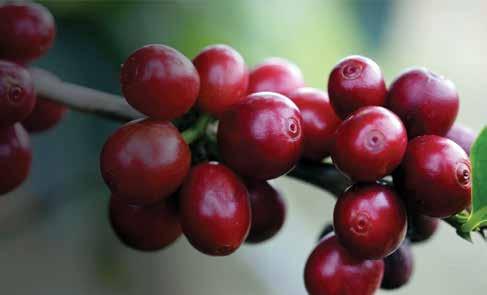
Solo il migliore
L’Arabica è la specie più pregiata, perché essendo molto delicata, necessita di un ambiente con caratteristiche geografiche e climatiche specifiche per crescere e mantenere il suo gusto dolce e aromatico. Per i suo i caffè, illy utilizza solo le 9 migliori varietà di Arabica.
Only the best
Arabica is the most valuable species, because being very delicate, it needs an environment with specific geographical and climatic characteristics to grow and maintain its sweet and aromatic taste. For its coffees, illy uses only the 9 best Arabica varieties.
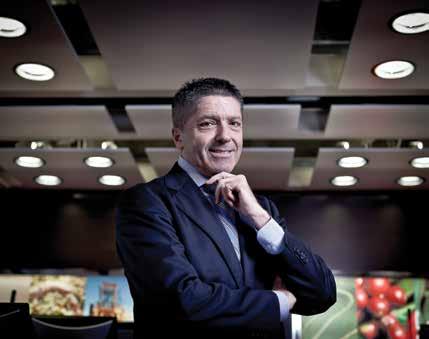
Il professore
Moreno Faina, direttore dell’Università del Caffè illy
The Professor
Moreno Faina, director of the illy Università del Caffè
realtà importanti e che hanno bisogno di una formazione di alto livello per ottenere il massimo”. Non di solo espresso vive l’uomo e, sapendo lavorare al meglio una materia prima ricca di sapori e aromi come il caffè, si possono coglierne sfumature diverse, che altrimenti sarebbero difficili da esaltare. “Il cold brew, ad esempio – spiega Moreno – è un prodotto che sta conoscendo una grande popolarità in molti Paesi perché è un modo nuovo di proporre il caffè, esaltando quella gamma di sapori ed aromi che è più vicina al gusto di un consumatore giovane. L’infusione a freddo è una tecnica nata nel Giappone del 1600, che illy ha ringiovanito, perfezionandone la tecnologia e creando una bevanda che è un ponte naturale fra generazioni di consumatori molto lontane fra loro. Le 12 ore di contatto fra polvere del caffè e acqua a 5°C fanno sì che si estraggano al meglio i composti aromatici, ma non le sostanze amare e il risultato è una bevanda estremamente gradevole e più dolce rispetto all’espresso, che si può preparare anche nel frigorifero di casa, dopo aver acquistato per una ventina di euro degli speciali contenitori in vetro, dotati di un filtro a maglie molto sottili. Le dosi? 60 grammi di polvere di caffè al litro per ottenere un ottimo caffè freddo. E qui entra in gioco l’Università del caffè per formare i barman e far conoscere loro questo nuovo modo di proporre il caffè, sia nella nostra sede di Trieste sia frequentando i corsi itineranti che illy organizza sul territorio. Sono incontri dove si parla espresso, cappuccino, cold brew e della possibilità di utilizzare il caffè per creare ricette con altri prodotti”. Ma di questo parleremo nella prossima puntata di questo viaggio per veri palati fini, capaci di cogliere la differenza fra un caffè preparato con tutti con i crismi e una “cioféca”, intraducibile termine napoletano per indicare un caffè di ignobile fattura. D’altro canto non si finisce mai di imparare e l’Università del caffè è lì a ricordarcelo.
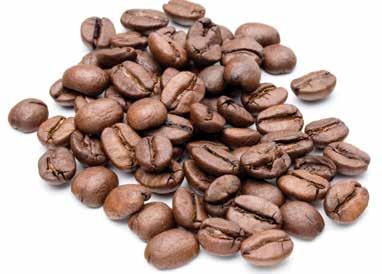
Un regalo dei Tropici
Le 9 Arabica pregiate scelte da illy provengono dalla Cintura del Caffè, ovvero quella fascia compresa tra il Tropico del Cancro e quello del Capricorno, che attraversa Paesi con climi tropicali
A gift from the Tropics
The 9 fine Arabicas chosen by illy come from the Coffee Belt, i.e. the band between the Tropic of Cancer and that of Capricorn, which crosses countries with tropical climates and we want to meet the needs of new, curious consumers. Mokas, filters, soluble grains or drinks like cold brew coffee have become important realities that need high-level training to get the most out of them.” So, despite Italian tradition, espresso isn’t necessarily the be-all and end-all, with the right handling an ingredient as rich in flavours and aromas as coffee can produce a huge variety of taste experiences which otherwise might be lost. “Cold brew, for example,” Moreno explains, “is really popular in many countries because it is a new way of drinking coffee, enhancing a range of flavours and aromas that is closest to the tastes of young consumers. Cold infusion is a technique that originated in Japan in the 1600s, which illy has rejuvenated, perfecting the technology and creating a drink that is a natural bridge between generations of consumers otherwise poles apart.” Coffee powder steeped in water for 12 hours at 5 °C ensures that all the aromas are extracted at their best, but leaves the bitterness behind. The result is an extremely pleasant drink, sweeter than espresso, which you can make in your fridge at home, all you need are some special glass containers with a very fine mesh filter which cost about twenty euros. The doses? 60 grams of coffee powder per litre for an excellent iced coffee. And this is where our Coffee University comes in, to train baristas and introduce them to this new way of making coffee, both at our headquarters in Trieste and on courses that illy organises elsewhere. At these meetings we discuss espressos, cappuccinos, cold brews and how to use coffee to create recipes with other products.” But that’s an issue for the next chapter of our gourmet coffee saga, designed for all those refined palates that can distinguish superb coffee properly prepared from what the uniquely expressive Neapolitans call a “cioféca (pronounced choe-fay-ka)”, a derogatory term impossible to translate used to describe a coffee that falls short of their exacting standards. Lifelong learning is having rather a moment, and illy’s Università del Caffè reminds of its importance in so many different fields.
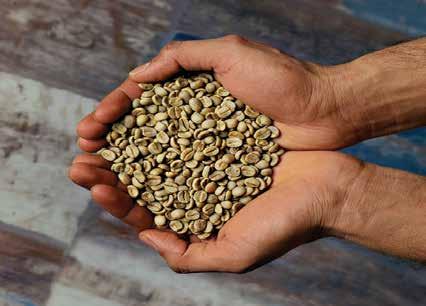
Un vero tesoro
Privato del suo contenitore e pronto per essere tostato
Treasure trove
Ready for roasting










